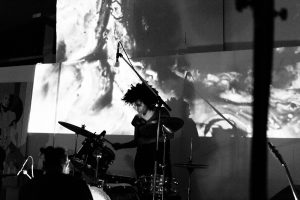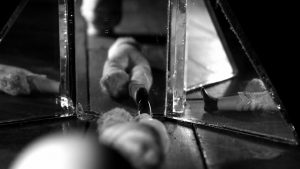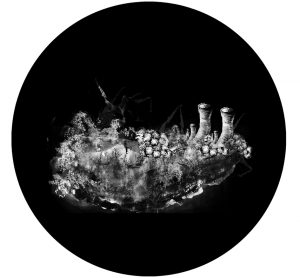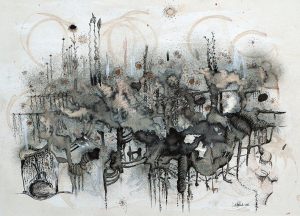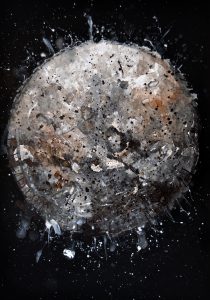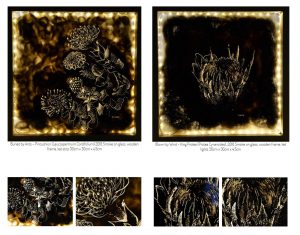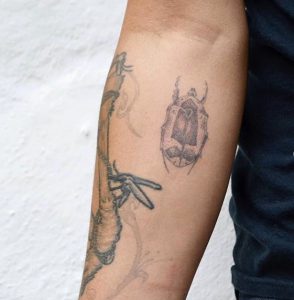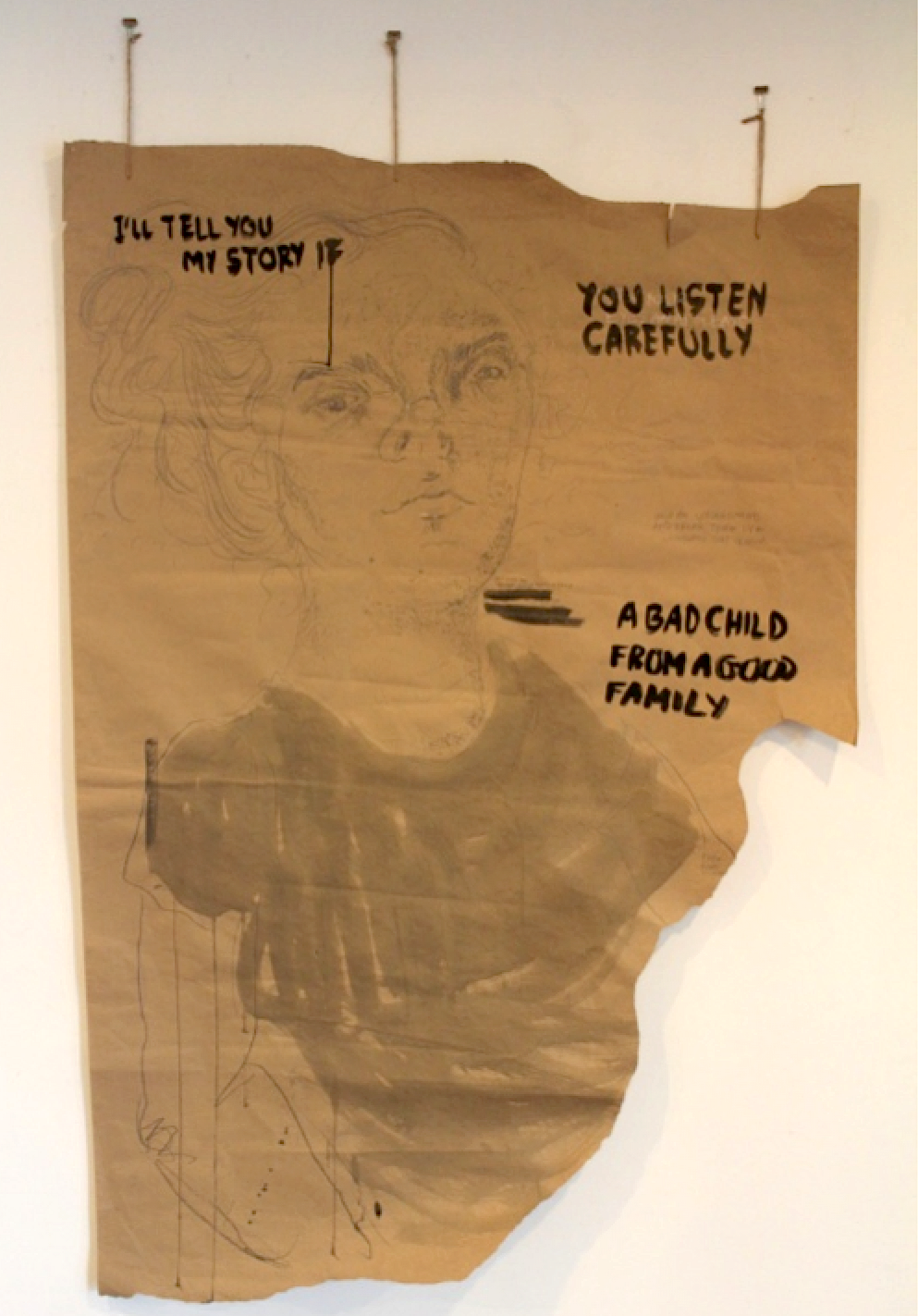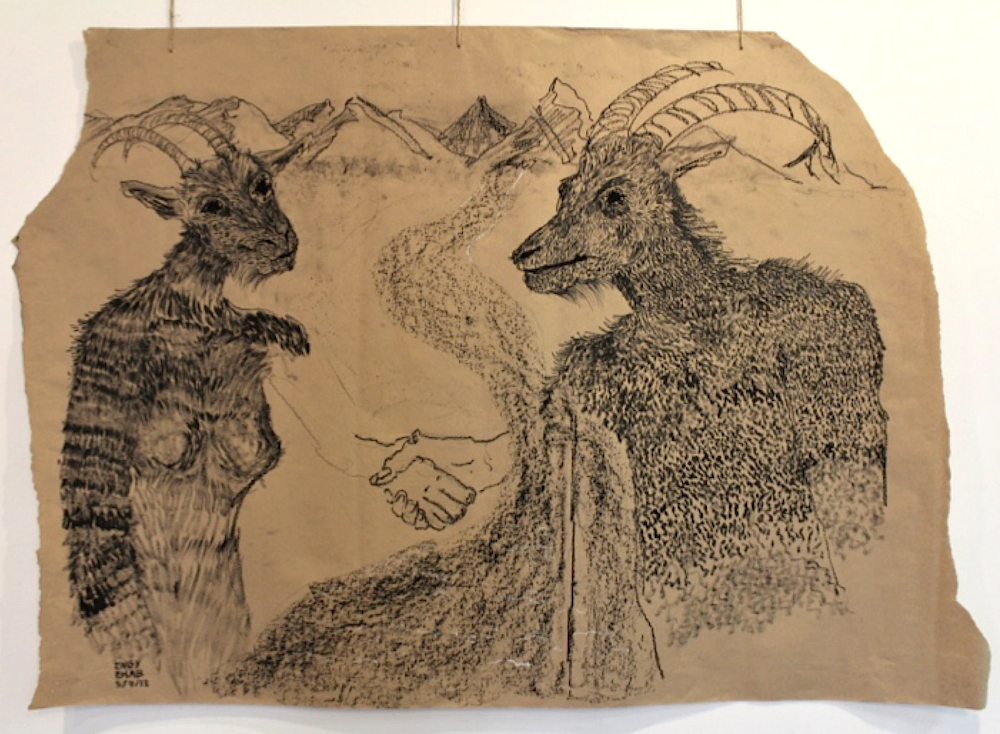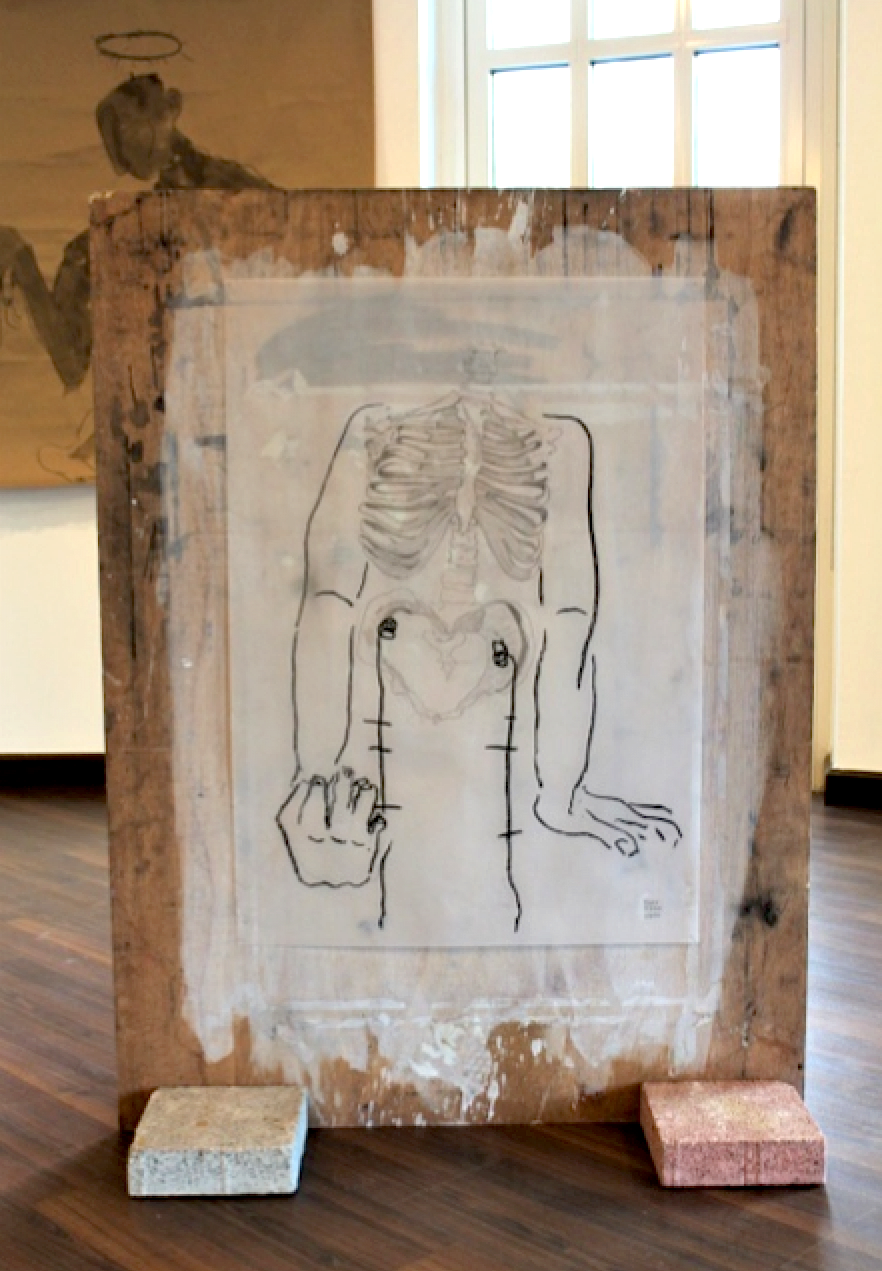“360 Days Later: Adikinyi Otsomo Kondo after the ‘Last Image Show'” | Nairobi City, Kenya
Art exists with the function to be anything but stagnant, as our cultural contexts change, so does the lens through which we look at art - and by default, the way the art is created also changes. One year, in the greater scale of things may seem like a short amount of time, but for an emerging artist, everyday is an opportunity to learn, explore and take a step in their artistic growth. I sat down with emerging Kenyan artist, Adikinyi Otsomo Kondo, to speak about her journey, her work and how she has grown since the Last Image Show opening approximately one year ago.
Val(V): What was your first experience with art?
Adikinyi(I): It was around the age of maybe six when I would participate in concerts both in church and in school. However, I grew up in a family steeped in music and art so there’s probably memories from when I was younger that I don’t remember.
V: When did you know you wanted to create - and why did you choose your specific medium (photography)?
I: I have been a creative person for quite some time so creation of art has been an ongoing life process for me. Photography came to me as a tool (the technology itself). At the time, when I walked into it, I was at a creative crossroads of wanting to be able to explain more about what was going on in my medulla (mind) because I was feeling that the words I would use to express myself were not enough to relay exactly what I was thinking. I fell into it. Now, I use it to showcase what I see and feel.
V: What messages do you try put across through your work?
I: Different themes. Emotion mostly. That it’s okay to feel. Also capturing what I see around me daily. The beauty that comes from being African in everyday life. Freedom of self and expression; I try and portray how I push my own expression, showcasing through imagery the freedom of mind.
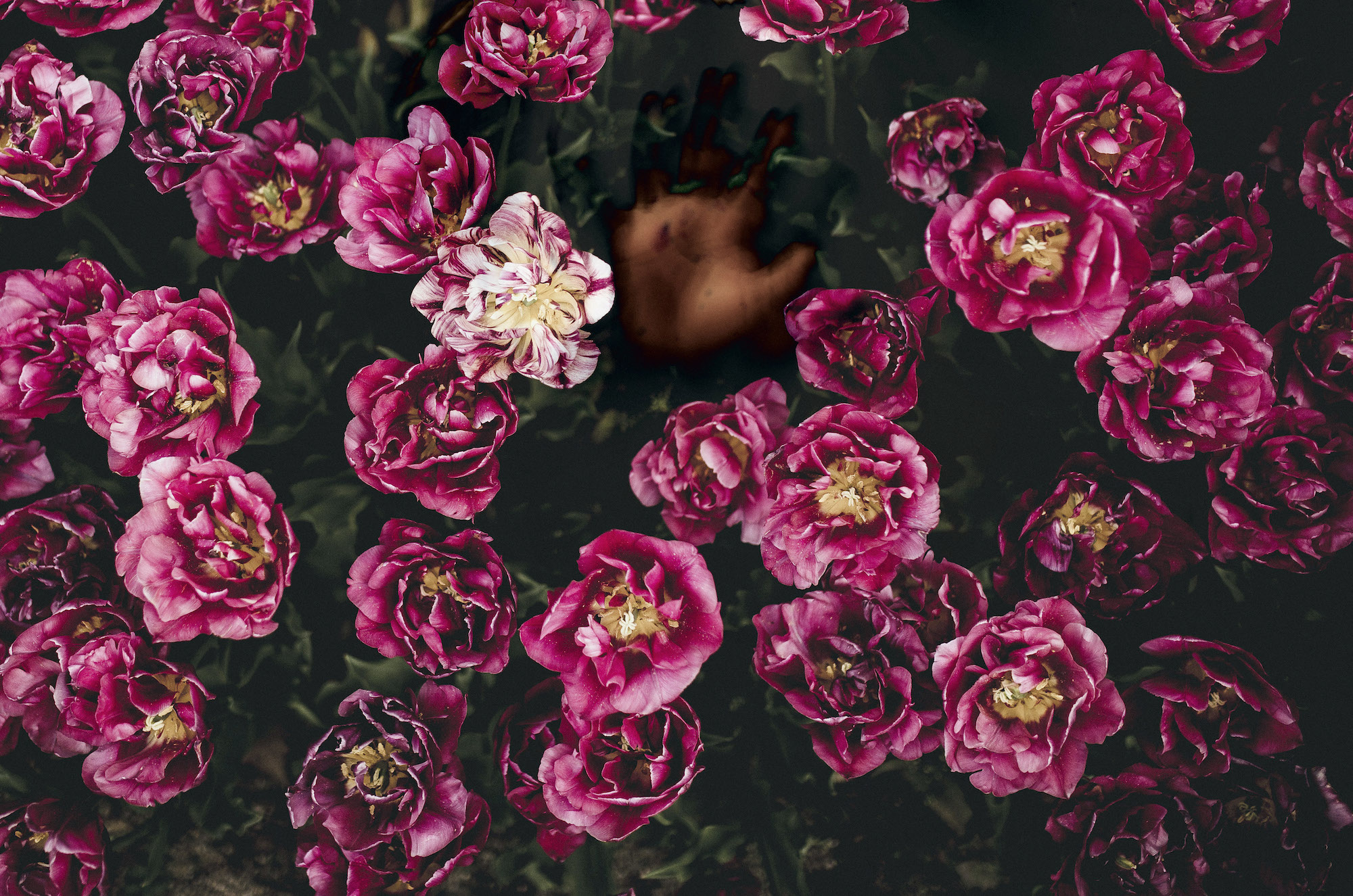 V: Is there something else that you do full time other than art?
V: Is there something else that you do full time other than art?
I: Actually, I’m currently studying as a sociology major at the Catholic University of Eastern Africa.
V: Which artists do you look up to in the art world and why?
I: I tend to throw my eyes and ears a lot toward the African (all over the continent) community of artists across time, but I have been especially intrigued with the artists of the civil rights movement in America, for example Nina Simone’s and Maya Angelou’s. Indulging in their work is not only looking at their experience with racism and the rules that segregated their society, but also looking at stuff they created. Pieces of work that celebrate humanity and beauty while, on the other hand, they are using their voices so that they don’t get killed.
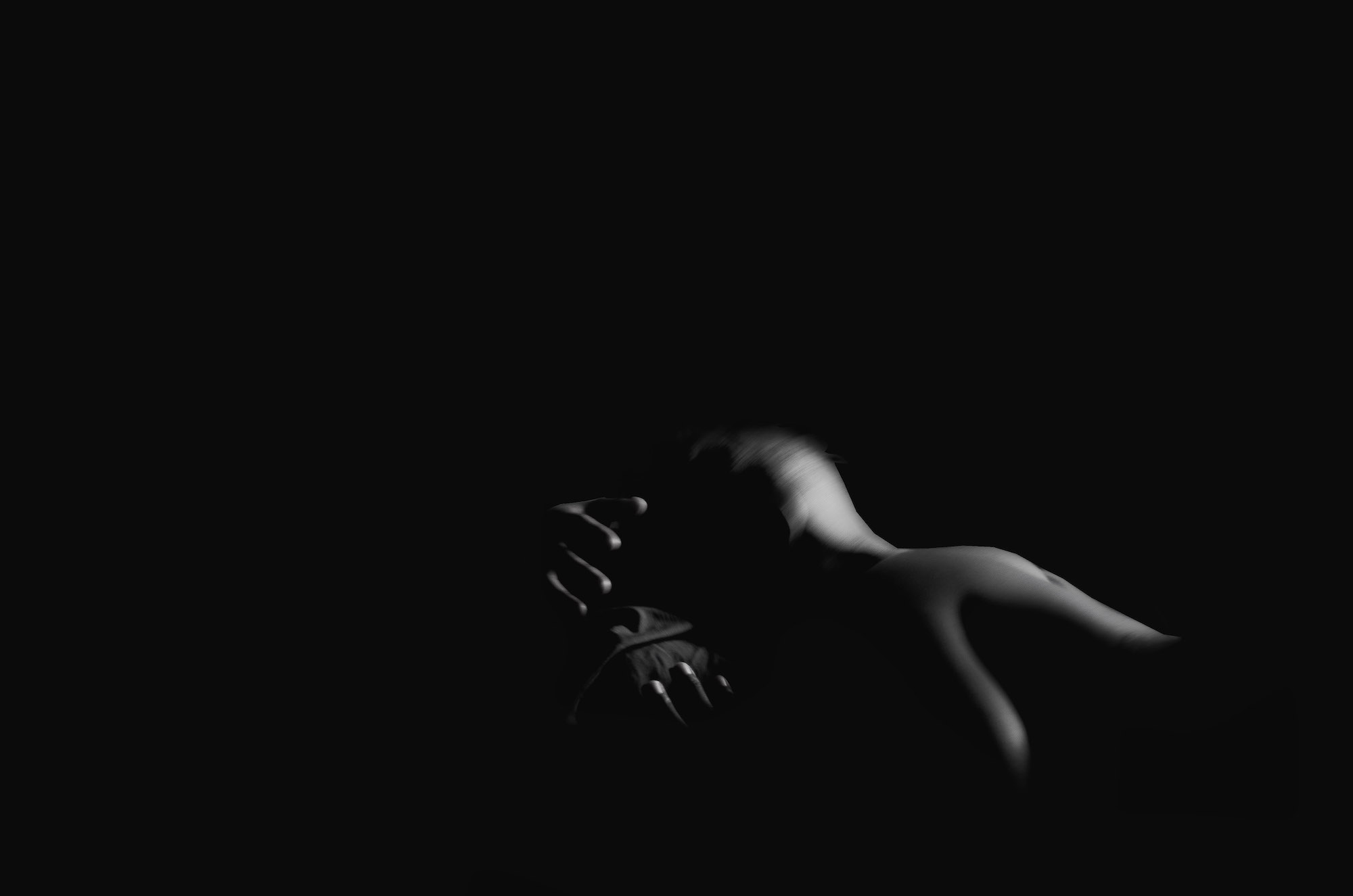 I look up to people who have put their mind and their heart energy into their work; people like Lupe Fiasco and Robert Glaspers. Then comes with it the perfection that Beyoncé serves us ALL. I’m particularly obsessed with musicians. Much of my inspiration comes from what I listen to.
I look up to people who have put their mind and their heart energy into their work; people like Lupe Fiasco and Robert Glaspers. Then comes with it the perfection that Beyoncé serves us ALL. I’m particularly obsessed with musicians. Much of my inspiration comes from what I listen to.
Right now, my ears are set on music that comes from Africa in the 60’s and 70’s and 80’s. It’s an interesting and particular sound and message.
V: And how about the Nairobi art scene?
I: There’s a BIG BADNESS (really cool) art that is coming from Nairobi City right now. The few times I attended live shows (exhibitions, gigs et al) I have been blown away by the kind of boundaries that are being broken by photographers, digital artists and musicians, who are all expressing their work and breaking the limits, setting the standards higher and higher - of course I am inspired by this.
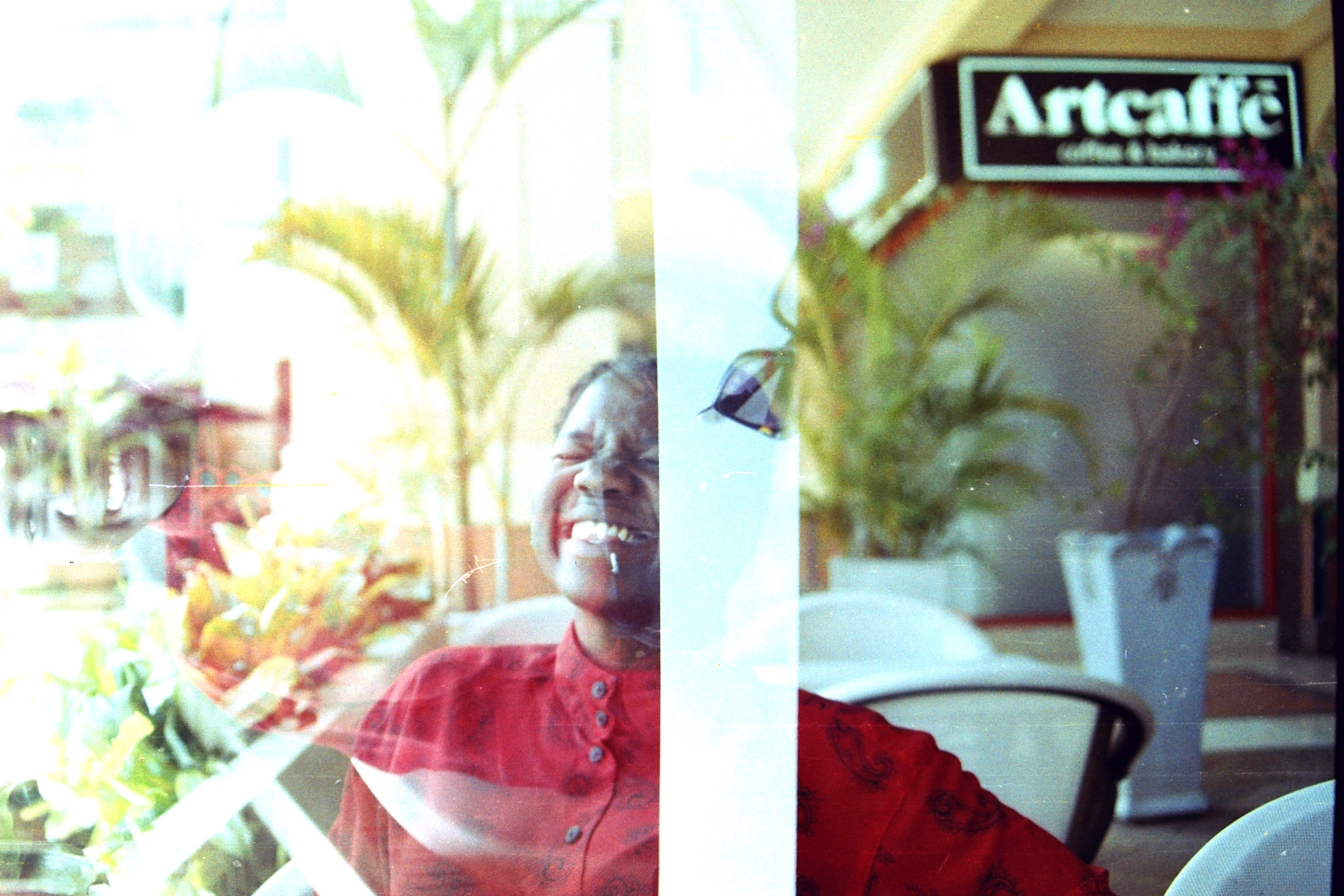 V: What is the biggest challenge you've faced?
V: What is the biggest challenge you've faced?
I: Me. My ego. You know the saying that goes “you’re the only person in your own way”, well that’s the case with different things actually. Trusting my inner voice and listening to my inner voice. Another challenge is including people in the creative process. I prefer to work alone; so collaborations, if I come by any, are very hard for me in more ways than one.
V: We sometimes are our own worst enemies, but you overcome that every time you put your work out there! What has been your greatest achievement so far?
I: Exhibiting! Having my work on the walls, to say the least, scares me more than anything because then it becomes tangible in reality, other than just being a digital thing.

The Last Image Show, as it travels the world, is a very big deal for me, because I can’t seem to grasp the fact that the image is travelling across countries. It is huge!
V: What did you learn from exhibiting at the Last Image Show in Dar es Salaam and Lusaka?
I: That palatability of art is not what makes art what it is. Art speaks. After the Last Image Show I also began to experiment with digital infusion into my art - pushing the boundaries.
V: What artistic projects are you currently working on?
I: Self-discovery and looking into the therapeuticism (not a real word) and teachability (also not a real word) of art from my favorite artists of all time.
V: Describe your art in 3 words?
I: Beauty. Emotional. Unconventional.
V: Where would you like your art to take you? What are you goals?
I: Into more exhibition halls, if I can get into them. (she smiles)
V: Any closing statement? I: Unicorns are real.
* All photographs by Adikinyi Otsomo Kondo
------------------------------------------------------------------------
Exhibitions such as the Last Image Show have broken barriers, usually set by galleries and exhibitions that adhere to an exclusive system of selection. With platforms like Instagram changing the way people interact with art, the actual structures of the art industry are also changing. Adikinyi is a great example of how making art spaces more accessible to emerging artists, is a natural way to instill and nurture growth.
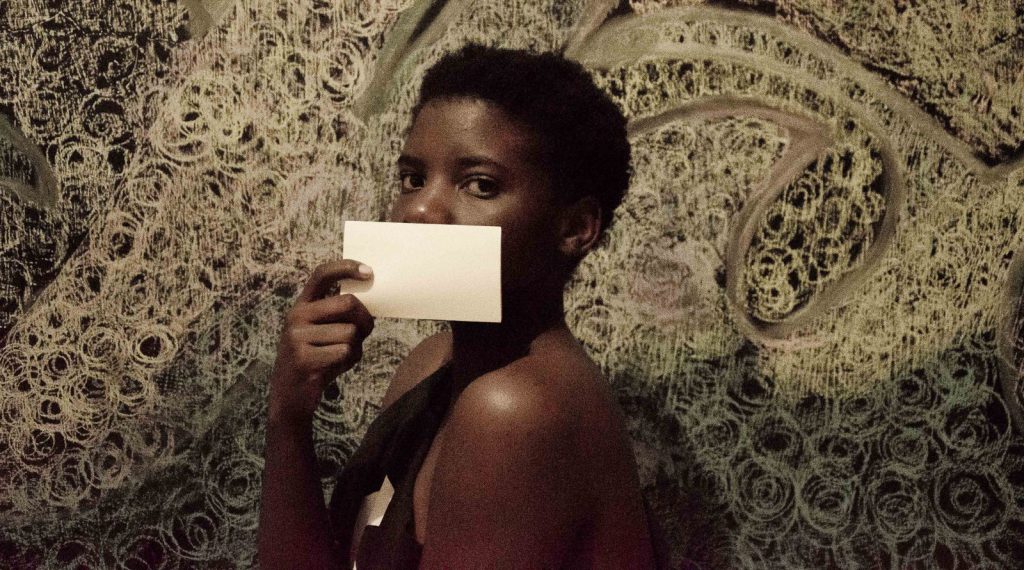
Looking somewhat critically at the progression of Adikinyi's work, one can see possibility - the physical and metaphorical layering of her newer images show a blossoming - shifting of thought, a metamorphosis that we should all anticipate.
There isn’t any better way of telling how we will develop as societies and as art communities without actually paying attention to young artist. Change is inevitable. We are privileged to be able to see it unfold in front of us in creative forms. As Adikinyi so wisely put it “Art Speaks” , we just have to learn how to listen.
Valerie Amani is a fashion designer and visual artist based in Dar es Salaam, Tanzania with a passion for writing. She is currently the Visual Art Program manager at Nafasi Art Space, one of the leading contemporary art platform in the country, while designing for her fashion brand Kahvarah. She uses digital platforms to share her art and writing and is currently working on developing a program that will educate and support young female artists in Tanzania.
Instagram: @ardonaxela

